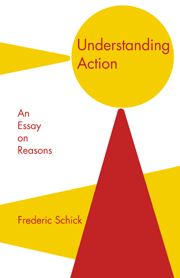Summary
INNER CONFLICT
Many philosophers have written about it, recently more than ever before. Conflict remains a fact of life, all these studies notwithstanding. A person is often “divided” on some issue, often is prompted in opposite ways. How can someone be in a conflict with himself alone, and how can he get himself out of it? Also, how serious is it for him if he doesn't get out?
A person in a conflict wants two propositions he knows can't both hold. He wants h and also k and believes that if h then not-k, and thus that if k then not-h. This concept is comprehensive. It covers deep conflicts and trivial ones, moral conflicts and nonmoral ones. If h and k are both morally urgent, you are involved in a moral conflict. But say that you want to move to Utah and also to move to Maine; this conflict is morally neutral.
Some thinkers do not accept the idea of a person's having incompatible desires. How can a person knowingly want what would defeat his own wants? Plato tells a story about
… Leontion, the son of Aglaion, who was on his way up from the Peiraeus, under the outer side of the north wall, when he noticed some corpses lying on the ground with the executioner standing by them. He wanted to go and look at them, and yet at the same time held himself back in disgust. […]
- Type
- Chapter
- Information
- Understanding ActionAn Essay on Reasons, pp. 102 - 150Publisher: Cambridge University PressPrint publication year: 1991



